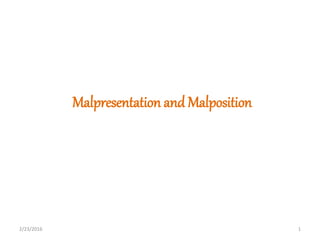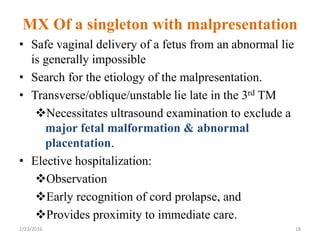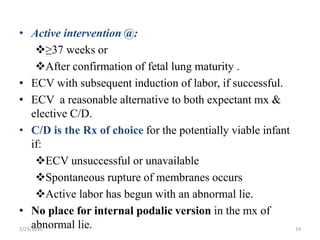This document discusses malpresentation and malposition during childbirth. It defines malpresentation as any non-vertex fetal position and lists the main types as face, brow, breech, shoulder, and compound. Factors that can increase the risk of malpresentation include diminished uterine cavity polarity, increased or decreased fetal mobility, an obstructed pelvis, and fetal malformations. The document outlines the management and risks associated with different malpresentation types, noting that while some may allow for vaginal delivery, cesarean delivery is often recommended when normal progress stalls.











































































